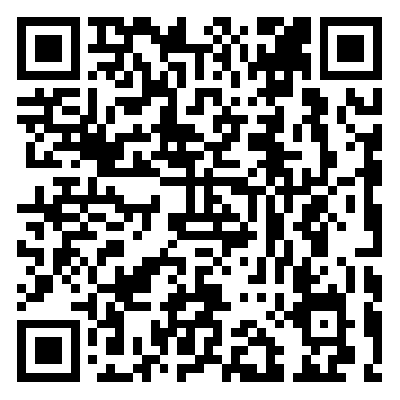Coinbase Experiences Insider Threat? $300 Million Scam Revealed, User Data Accurately Leaked
Original Title: "Over $300 Million Lost in One Year, Coinbase Users Repeatedly Targeted by Sophisticated Scams, Is There an Insider Leak Behind the Scenes?"
Original Author: Fairy, ChainCatcher
"Hello, this is the Coinbase Security Team. We have detected unusual activity on your account..."
The voice on the other end of the phone is professional and urgent, able to accurately state your name, registered email, and recent transaction history. Will you choose to hang up immediately, or follow the "customer service" guidance to gradually transfer your funds to a so-called "secure wallet"?
Recently, multiple Coinbase users have been consecutively scammed, with staggering losses. In March alone, the stolen funds have exceeded $46 million, and the annual losses for Coinbase users due to social engineering scams have reached over $300 million.
However, how exactly have these hackers been able to precisely target their victims? How have they obtained users' personal information? This security crisis may be even more severe than imagined.
Rampant Scams, Industrialized Phishing Attacks
On March 28, blockchain detective ZachXBT revealed that in the past two weeks, there have been multiple suspected cases of Coinbase users falling victim to scams, resulting in a total stolen amount in March exceeding $46 million.
In fact, such scams have long been evident. As early as the beginning of February, ZachXBT had previously disclosed that between December 2024 and January 2025, Coinbase users had lost as much as $65 million due to similar tactics, putting Coinbase at risk of facing over $300 million in social engineering scam losses annually.
According to ZachXBT's analysis, the scam tactics have formed a mature industrial chain:
1. Fraudsters Impersonate Coinbase Official
The scammers use a spoofed phone number to call the victim and leverage the user's personal information to gain trust. They claim that the user's account has experienced unauthorized login attempts, leading the victim to cooperate with security verification.
2. Sending Phishing Emails
The scammers send fake Coinbase emails containing a forged Case ID.
3. Guide User to Transfer Funds
The scammer asks the victim to transfer funds to a Coinbase Wallet and whitelist a scam address, claiming this is a form of account security verification.
4. Clone Coinbase Website
The scammer creates an almost 1:1 replica of the Coinbase phishing website and sends different operation prompts to the victim through forged emails and a Telegram scam panel.
In addition, according to Cointelegraph, several cryptocurrency users have recently received scam emails impersonating Coinbase and Gemini. These emails usually claim that due to regulatory requirements, users must transition to a self-hosted wallet and set April 1 as the deadline to create a sense of urgency.
The emails provide links to download the Coinbase Wallet or Gemini Wallet, along with pre-generated recovery phrases. Once users use these phrases to create a new wallet and transfer assets, the funds are instantly emptied by the scammer.
Internal Data Access Issues Surface
The core of social engineering scams lies in precise information gathering. In the Coinbase user scam cases, the attackers seem to have had access to victims' personal information, including phone numbers, email addresses, transaction records, etc. This raises a key question: how did this data fall into the hands of scammers?
Yesterday, The Block co-founder Mike Dudas claimed to have received an email from Coinbase on the X platform. The content of this email was unsettling, pointing directly to internal data access issues. The email stated:
"We are writing to inform you that we have detected signs indicating that a Coinbase employee may have accessed a small number of Coinbase customer accounts' records in a manner not consistent with internal policies, including your account."

While the email stated, "Your assets remain secure, and your Coinbase account has not been compromised," and emphasized that there is currently no evidence of data leakage to external parties, this email issued a clear warning to users: internal data access issues have been confirmed and are not isolated incidents.
Dudas stated that this explains the phishing emails and calls pretending to be from Coinbase.
However, the scope of the data breach is questionable and may involve a larger set of users. Community user @ghaiankur stated: "I don't have any funds on Coinbase, and I have never used it. Yet I still received these emails because I have an account, so this may not just be targeting a few specific accounts but the entire database."
Data Breaches as an Industry Risk
Not only Coinbase, other exchanges also seem to face similar internal security vulnerabilities.
After Dudas shared the email, crypto trader Jordan Fish (@Cobie) revealed that the crypto exchange Kraken recently experienced a similar attack. He speculated: "This could be the attackers' strategy — to infiltrate the customer support team and internally steal user data."
Meanwhile, on March 27, the dark web news site Dark Web Informer disclosed that a hacker codenamed AKM69 claimed to have obtained a significant amount of private information of Gemini exchange users. The database contains 100,000 records, including the full names, emails, phone numbers, and locations of U.S. users, and even some data from Singapore and the U.K.

Either learn to protect users, or be abandoned by users.
When commenting on this incident, Solana co-founder toly suggested that exchanges should implement user-controlled transfer time locks to reduce the risk of assets being rapidly stolen. However, the essence of this event goes beyond that, exposing the internal risk control failures of exchanges and the highly industrialized nature of fraud.
Exchange security is no longer just a technical protection issue but also a matter of management and trust. In the face of increasingly sophisticated attack methods, establishing a more comprehensive risk control system will determine the future security standards of the industry.
Welcome to join the official BlockBeats community:
Telegram Subscription Group: https://t.me/theblockbeats
Telegram Discussion Group: https://t.me/BlockBeats_App
Official Twitter Account: https://twitter.com/BlockBeatsAsia
 Forum
Forum OPRR
OPRR Finance
Finance
 Specials
Specials
 On-chain Eco
On-chain Eco
 Entry
Entry
 Podcasts
Podcasts
 Data
Data


 Summarized by AI
Summarized by AI







